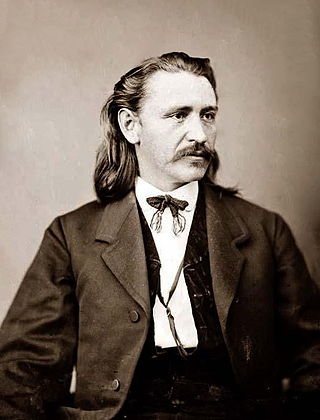
Indian Territory and the Indian Territories are terms that generally described an evolving land area set aside by the United States government for the relocation of Native Americans who held original Indian title to their land as an independent nation-state. The concept of an Indian territory was an outcome of the U.S. federal government's 18th- and 19th-century policy of Indian removal. After the American Civil War (1861–1865), the policy of the U.S. government was one of assimilation.

Elias Cornelius Boudinot was an American politician, lawyer, newspaper editor, and co-founder of the Arkansan who served as the delegate to the Confederate States House of Representatives representing the Cherokee Nation. Prior to this he served as an officer of the Confederate States Army in the Trans-Mississippi Theater of the American Civil War. He was the first Native American lawyer permitted to practice before the U.S. Supreme Court.

Brigadier-General Stand Watie, also known as Standhope Uwatie and Isaac S. Watie, was a Cherokee politician who served as the second principal chief of the Cherokee Nation from 1862 to 1866. The Cherokee Nation allied with the Confederate States during the American Civil War and he was the only Native American Confederate general officer of the war. Watie commanded Indian forces in the Trans-Mississippi Theater, made up mostly of Cherokee, Muskogee, and Seminole. He was the last Confederate States Army general to surrender.

The Peoria are a Native American people. They are enrolled in the federally recognized Peoria Tribe of Indians of Oklahoma headquartered in Miami, Oklahoma.

The Osage Nation, is a Midwestern American tribe of the Great Plains. The tribe developed in the Ohio and Mississippi river valleys around 700 B.C. along with other groups of its language family. They migrated west after the 17th century, settling near the confluence of the Missouri and Mississippi rivers, as a result of Iroquois expansion into the Ohio Country in the aftermath of the Beaver Wars.
The Fort Smith Council, also known as the Indian Council, was a series of meetings held at Fort Smith, Arkansas from September 8–21, 1865, that were organized by the United States Commissioner of Indian Affairs, Dennis N. Cooley, for Indian tribes east of the Rockies.
The Camp Napoleon Council was a meeting of Native American tribes in today's Oklahoma that resulted in an intertribal compact. The council took place at Cottonwood Camp on May 24, 1865 near present-day Verden in Grady County.

Lewis Downing, also known by his Cherokee name ᎷᏫ ᏌᏩᎾᏍᎩ ("Lewie-za-wau-na-skie") served as Chief of the Cherokee Nation from 1867 to 1872. After the death of John Ross, he was a compromise candidate who was elected to a full term as Principal Chief. Downing worked to heal divisions in the tribe following removal to the Indian Territory and the American Civil War. He was elected to a second term in 1871, but died in 1872, after a two-week battle with pneumonia. The Cherokee Council chose William P. Ross as his successor.
The Indian Home Guard was a series of volunteer infantry regiments recruited from the Five Civilized Tribes of the Indian Territory to support the Union during the American Civil War. There was also a series of Confederate units of Indian Territory.
The trans-Mississippi theater of the American Civil War was the scene of the major military operations west of the Mississippi River. The area is often thought of as excluding the states and territories bordering the Pacific Ocean, which formed the Pacific coast theater of the American Civil War (1861–1865).

The 1st Cherokee Mounted Rifles was a Confederate States Army regiment which fought in the Indian Territory during the American Civil War. It was formed from the merger of two predecessor units the First Regiment of Cherokee Mounted Rifles, and the Second Regiment of Cherokee Mounted Rifles. The first commander was Col. John Drew, while the second was Stand Watie.
Confederate Units of Indian Territory consisted of Native Americans from the Five Civilized Tribes — the Cherokee, Chickasaw, Choctaw, Creek, and Seminole nations. The 1st Cherokee Mounted Rifles were commanded by the highest ranking Native American of the war: Brig. Gen. Stand Watie, who also became the last Confederate General to surrender on June 23, 1865. There was also a series of Union units of Indian Territory.

During the American Civil War, most of what is now the U.S. state of Oklahoma was designated as the Indian Territory. It served as an unorganized region that had been set aside specifically for Native American tribes and was occupied mostly by tribes which had been removed from their ancestral lands in the Southeastern United States following the Indian Removal Act of 1830. As part of the Trans-Mississippi Theater, the Indian Territory was the scene of numerous skirmishes and seven officially recognized battles involving both Native American units allied with the Confederate States of America and Native Americans loyal to the United States government, as well as other Union and Confederate troops.

The Cherokee in the American Civil War were active in the Trans-Mississippi and Western Theaters. In the east, Confederate Cherokees led by William Holland Thomas hindered Union forces trying to use the Appalachian mountain passes of western North Carolina and eastern Tennessee. Out west, Confederate Cherokee Stand Watie led primarily Native Confederate forces in the Indian Territory, in what is now the state of Oklahoma. The Cherokee partnered with the Confederacy in order to get funds, as well as ultimately full recognition as a sovereign, independent state.

The Choctaw in the American Civil War participated in two major arenas—the Trans-Mississippi and Western Theaters. The Trans-Mississippi had the Choctaw Nation. The Western had the Mississippi Choctaw. The Choctaw Nation had been mostly removed west prior to the War, but the Mississippi Choctaw had remained in the east. Both the Choctaw Nation and the Mississippi Choctaw would ultimately side with the Confederate States of America.

The Cherokee Nation was a legal, autonomous, tribal government in North America recognized from 1794 to 1907. It was often referred to simply as "The Nation" by its inhabitants. The government was effectively disbanded in 1907, after its land rights had been extinguished, prior to the admission of Oklahoma as a state. During the late 20th century, the Cherokee people reorganized, instituting a government with sovereign jurisdiction known as the Cherokee Nation. On July 9, 2020, the United States Supreme Court ruled that the Muscogee (Creek) Nation had never been disestablished in the years before allotment and Oklahoma Statehood.

An Organic Act is a generic name for a statute used by the United States Congress to describe a territory, in anticipation of being admitted to the Union as a state. Because of Oklahoma's unique history an explanation of the Oklahoma Organic Act needs a historic perspective. In general, the Oklahoma Organic Act may be viewed as one of a series of legislative acts, from the time of Reconstruction, enacted by Congress in preparation for the creation of a united State of Oklahoma. The Organic Act created Oklahoma Territory, and Indian Territory that were Organized incorporated territories of the United States out of the old "unorganized" Indian Territory. The Oklahoma Organic Act was one of several acts whose intent was the assimilation of the tribes in Oklahoma and Indian Territories through the elimination of tribes' communal ownership of property.
On the eve of the American Civil War in 1861, a significant number of Indigenous peoples of the Americas had been relocated from the Southeastern United States to Indian Territory, west of the Mississippi. The inhabitants of the eastern part of the Indian Territory, the Five Civilized Tribes, were suzerain nations with established tribal governments, well established cultures, and legal systems that allowed for slavery. Before European Contact these tribes were generally matriarchial societies, with agriculture being the primary economic pursuit. The bulk of the tribes lived in towns with planned streets, residential and public areas. The people were ruled by complex hereditary chiefdoms of varying size and complexity with high levels of military organization.

The ambush of the steamboat J.R. Williams was a military engagement during the American Civil War. It took place on June 15, 1864, on the Arkansas River in the Choctaw Nation which became encompassed by the State of Oklahoma. It is popularly termed the "only naval battle" in that landlocked state. It was a successful Confederate attack on the Union Army's lines of supply. The Confederate forces were Cherokee, Choctaw, Chickasaw and Creek Indians led by General Stand Watie, who was a Cherokee.

John Allen Mathews was an American frontiersman and slave owner who settled among the Osage Nation and later advocated and died for the Confederate States of America.














